Book with Confidence: Enjoy peace of mind — your 20% deposit is fully refundable up to 60 days before departure. See terms & conditions.
Guided Temples and Trails of Shikoku Hiking and Walking Tour
Journey into the spiritual heart of Japan on an 11-day walking adventure that follows the ancient Shikoku 88 Temple Pilgrimage. Beginning in Osaka and continuing through the island’s four prefectures, this tour blends sacred landscapes, cultural immersion, and warm local hospitality.
Start with a stay in Osaka before travelling to Tokushima to walk the first temples of the pilgrimage, where Kōbō Daishi began his spiritual path. Continue through forested trails and mountain temples such as Shōsan-ji and Tairyū-ji, each offering a glimpse into Japan’s Buddhist heritage. Along the way, experience traditional crafts like indigo dyeing and washi paper making, and explore the dramatic Iya Valley, crossing its vine bridge and cruising through Oboke Gorge.
In Kōchi, visit Chikurin-ji and Kōchi Castle, then unwind in Matsuyama at Dōgo Onsen, one of Japan’s oldest hot springs. The pilgrimage continues through tranquil countryside and sacred peaks to the final temple, Ōkubō-ji, where pilgrims celebrate the completion of their vow. With stays in temple lodgings, countryside inns, and onsen ryokan, this journey reveals the timeless beauty and spirit of Shikoku.
Guided
Casual+ hotels
Osaka
Kotohira
challenging
28 km / 17 mi
6
Min. 4, Max. 14
Kansai International Airport (KIX), Osaka
Matsuyama Airport (MYJ), Ehime Prefecture
Highlights
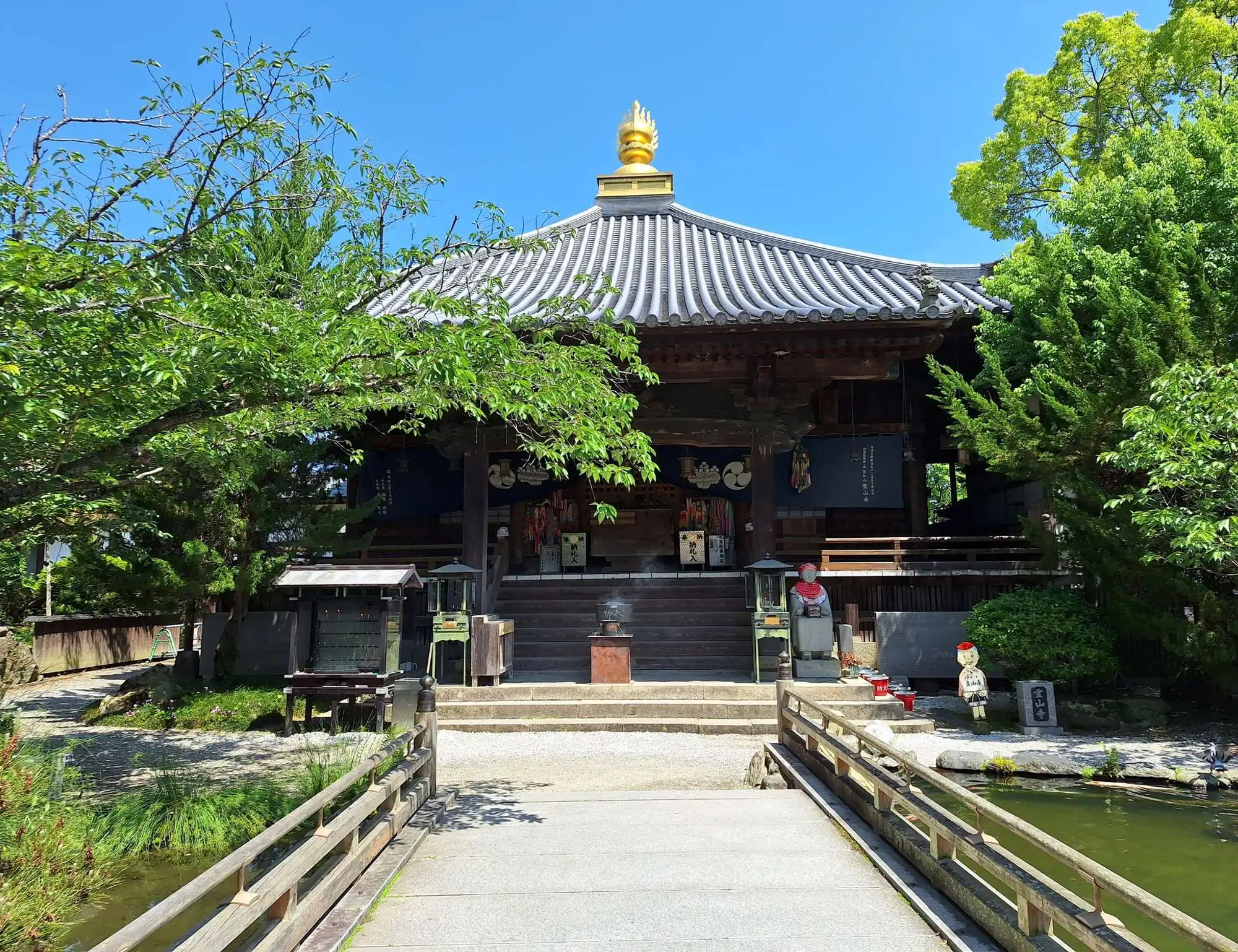
Ryozen-ji Temple – The Sacred Beginning
Step into the spiritual journey at Ryozen-ji, the first temple of the Shikoku 88 Pilgrimage. Its serene halls and peaceful gardens set the perfect tone for a soulful adventure.

Kochi Castle – Fortress of History
Explore the majestic Kochi Castle, one of the few original Japanese castles still standing. Towering over the city, it offers stunning views and a glimpse into feudal Japan.

Washi paper making workshop
Learn the delicate art of traditional washi paper making, a craft perfected over centuries in rural Japan. Guided by local artisans, you’ll use natural fibres and wooden frames to create your own handmade paper.
Itinerary
Brief Itinerary
Meals are indicated as B = Breakfast, L = Lunch, D = Dinner.
Listed hotels are subject to availability and may be replaced with similar alternatives of equal standard.
| Day | Place | Casual+ Inns | Meals | Distance | Activity |
|---|---|---|---|---|---|
| DAY 1 | Osaka | Hotel Monterey Grasmere (4-star) | D | ||
| DAY 2 | Tokushima | Shukubo | B D | 6 km / 4 mi | hiking |
| DAY 3 | Kamiyama | Shiki no Sato Onsen Ryokan | B D | 119 km / 74 mi | hiking |
| DAY 4 | Tokushima | Awa Kanko Hotel | B D | 7 km / 4 mi | hiking |
| DAY 5 | Iya Valley | Hotel Iya Onsen | B L D | ||
| DAY 6 | Kochi | QRAUD Hotel | B L D | ||
| DAY 7 | Matsuyama | ANA Crowne Plaza Hotel (4-star) | B L | 2 km / 1 mi | walking |
| DAY 8 | Matsuyama | ANA Crowne Plaza Hotel (4-star) | B L | 12 km / 7 mi | hiking |
| DAY 9 | Kotohira | Kotosankaku Ryokan (Onsen) | B D | 13 km / 8 mi | hiking |
| DAY 10 | Kotohira | Kotosankaku Ryokan (Onsen) | B D | 11 km / 7 mi | hiking |
| DAY 11 | Depature | B |
Detailed Itinerary

Day 1: Osaka
Arrive at Kansai International Airport and head to your comfortable hotel in Osaka, Japan’s lively food capital.
Osaka is the third largest city in Japan after Tokyo and Yokohama and serves as the commercial and cultural hub of western Japan. Known for its lively street food scene, neon-lit districts like Dotonbori, and warm, outgoing locals, Osaka combines modern energy with historic charm, making it an ideal starting point for exploring nearby regions such as Shikoku, Kyoto, and Nara.
After settling in and taking a little time to relax, meet your guide and fellow travelers in the early evening for a friendly welcome briefing.
End your first day with a delicious dinner at a local restaurant, where you’ll savor authentic Japanese dishes and enjoy warm conversations with your group in a relaxed and cheerful setting.

Day 2: Tokushima
We begin our day with a scenic highway bus journey to Tokushima Prefecture, once known as Awa Province, located in eastern Shikoku. Today’s walk leads us through tranquil suburban neighborhoods as we explore the first three temples of the renowned Shikoku pilgrimage route, each admired for its serene beauty and spiritual atmosphere.
Our journey starts at Ryozen-ji (Vulture Mountain Temple), founded in the 8th century and considered the starting point of the pilgrimage. We then proceed to Gokuraku-ji (Celestial Temple), where Kōbō Daishi performed 37 days of sacred ritual practice at the age of 42. The walk concludes at the enchanting Konsen-ji (Golden Fountain Temple), famed for its striking red pagoda and graceful bridge.
After our temple visits, we transfer by private coach to our shukubō, a traditional temple lodging, where we’ll spend a peaceful night immersed in the tranquil spirit of monastic life.
Shukubos are lodgings in Buddhist temples originally meant for pilgrims, but now open to anyone. The rooms are similar to ryokan or minshuku, though with fewer facilities. The food is excellent vegetarian Buddhist ‘shojin-ryori’ cuisine. It is a wonderful experience to stay in a shukubō and there is also the opportunity to join the early morning religious service.
Elevation gain: Negligible
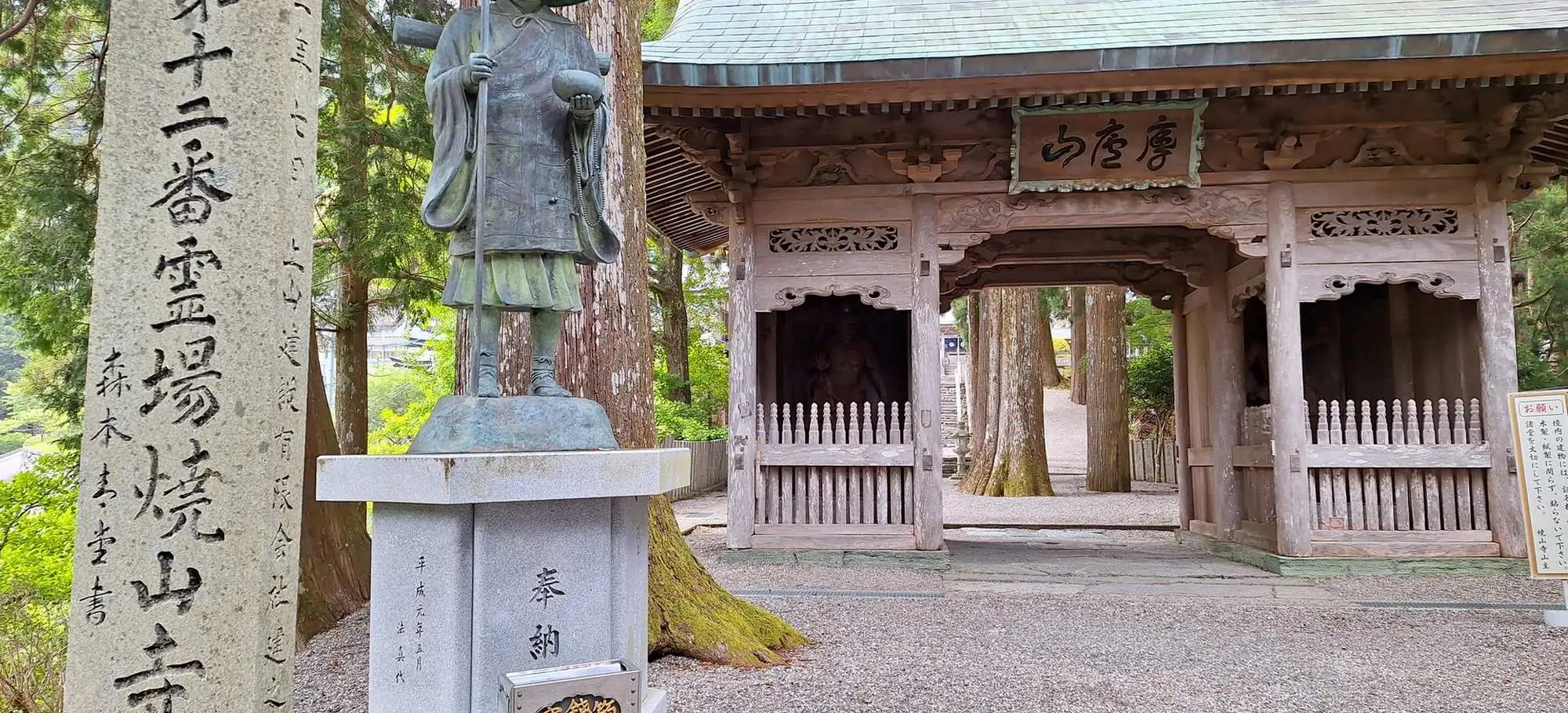
Day 3: Kamiyama
In the morning, we set off by private coach to Fujii-dera, Temple 11, also known as the Temple of the Wisteria Well, nestled at the foot of Mount Shōsanji. From here, we begin one of the pilgrimage’s most demanding and scenic routes, a trail known as henro-korogashi, which twists through dense forests and climbs over three mountain peaks. The trail reaches an elevation of about 900 meters (nearly 3,000 feet), the highest point of our entire journey.
The hike is steep in places, but the effort is richly rewarded with stunning views and a deep sense of accomplishment. Our goal, Shosan-ji Temple, sits impressively atop the mountainside, offering sweeping vistas of the valley below. Travelers who prefer a lighter option can take a coach to meet the group at a halfway point along the trail. The day ends at a charming Japanese inn, where we relax and enjoy a delicious dinner of local specialties, celebrating a day full of adventure and achievement.
Elevation gain: 1,230 m

Day 4: Tokushima
In the morning, we travel by private coach to Temple 20, Kakurin-ji (Crane Forest Temple), sitting gracefully atop Mount Washigao at 550 meters. The approach, or sandō, is lined with majestic pine and hinoki cypress trees, creating a tranquil and picturesque setting. Established by Kōbō Daishi in 799 under an imperial decree from Emperor Kanmu, Kakurin-ji is celebrated as one of the most atmospheric temples on the pilgrimage.
Our next stop is Temple 21, Tairyu-ji (Temple of the Mystical Dragon), perched near the 618-meter summit of Mount Tairyu. This is where Kōbō Daishi underwent rigorous spiritual training at 19 before founding the temple in 793. The day concludes with a scenic cable car ride, offering sweeping views across cedar forests and out toward the sea. From there, we continue by bus to our Tokushima accommodation, where we unwind after a day full of history, nature, and spiritual exploration.
Elevation gain: 460 m

Day 5: Iya Valley
After breakfast, we dive into the art of Aizome, or indigo dyeing, where you can try your hand at this traditional craft and discover how indigo leaves are cultivated and processed using tools from centuries ago. We then visit a historic indigo merchant’s mansion, a rare building that has stood intact since the Edo period.
Our journey continues into the Iya Valley, a secluded part of Shikoku famous for its steep mountains and dramatic gorges. Here, villagers once built vine bridges to link remote settlements, and we will cross the Iya Kazurabashi Vine Bridge, an impressive relic of their resourcefulness. Later, we enjoy a boat ride along Oboke Gorge, drifting along the emerald waters of the Yoshino River while taking in towering cliffs and serene scenery. This 30-minute ride offers a calm and memorable way to appreciate the valley’s rugged beauty.
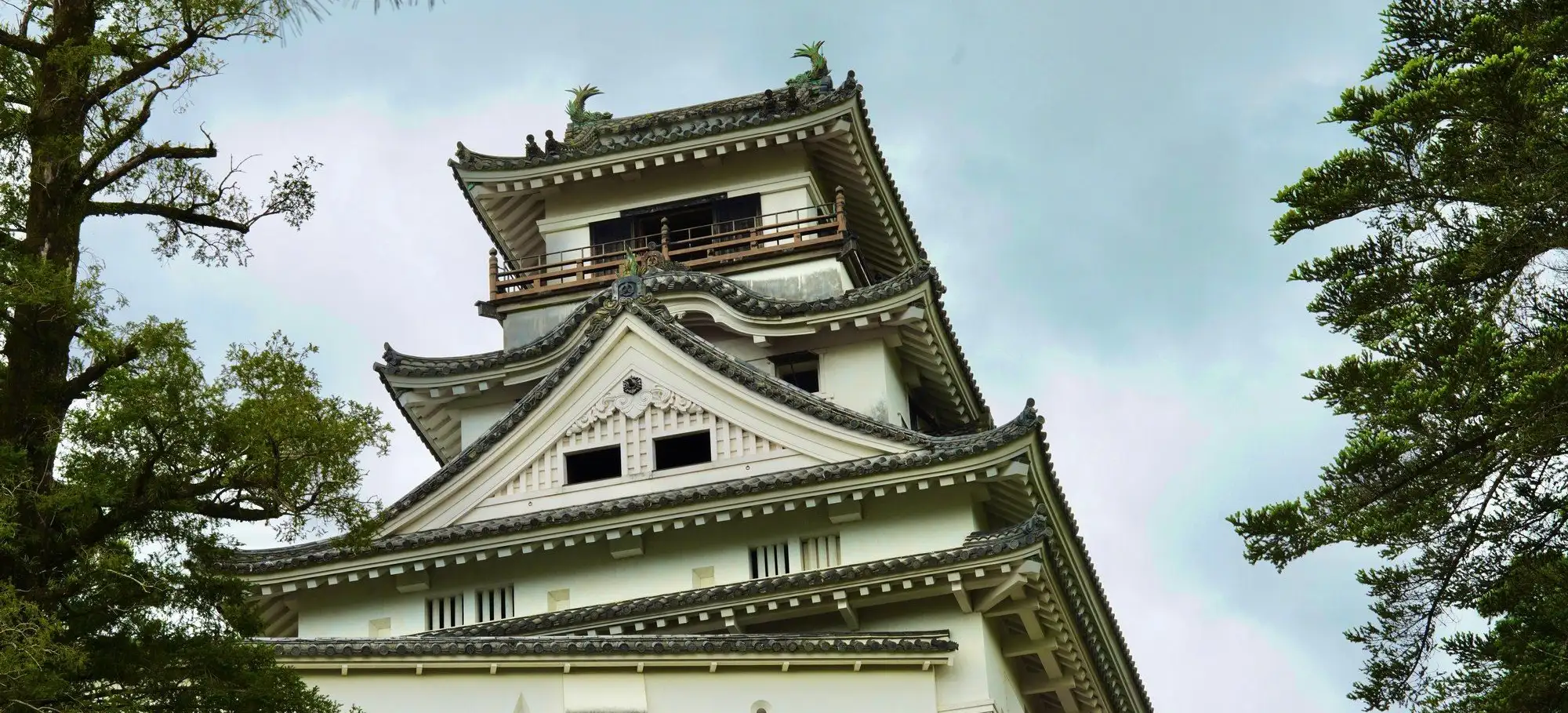
Day 6: Kochi
Travel by private coach to Kōchi Prefecture, once known as Tosa Province, a remote and tranquil region of Shikoku. Despite its size, Kōchi’s small population gives it a relaxed and open feel, perfect for exploration.
Enjoy lunch at Hirome Ichiba Market, a lively hall with over 60 stalls offering an incredible variety of local specialties. Spend the afternoon at Temple 31, Chikurin-ji (Bamboo Forest Temple), where you can admire a museum of treasured artifacts and a stunning garden designed by Zen master Musō Soseki, celebrated nationwide for its beauty.
Next, visit Kōchi Castle, one of Japan’s few original castles still standing, and then head to Katsurahama Beach, famous for its dramatic rock formations rising from the sea. We end the day with an overnight stay at a hotel near a roadside station outside Kōchi, giving you a chance to soak in the region’s history, culture, and natural charm, including the clear waters of the Niyodo River.
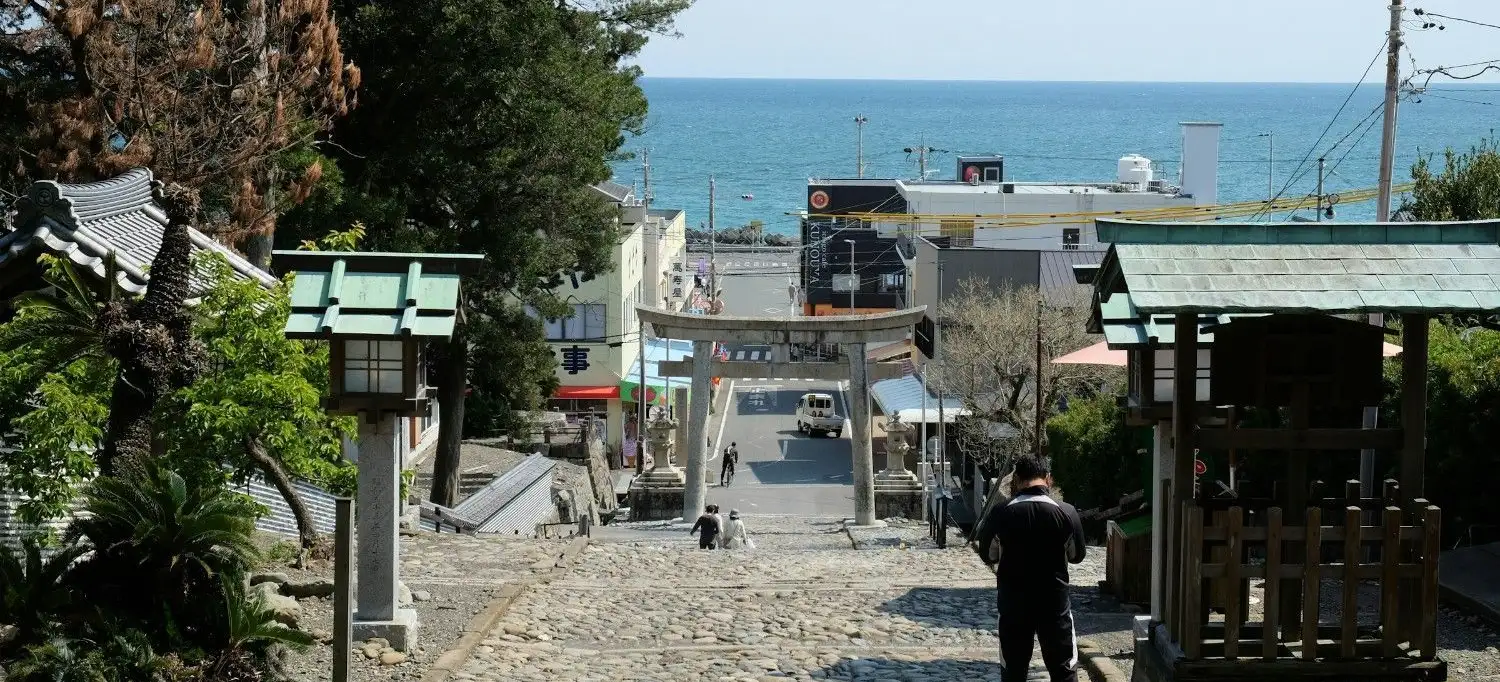
Day 7: Matsuyama
Begin the day with a hands-on Washi paper making workshop, learning the delicate art of traditional Japanese paper crafting. Afterward, enjoy a scenic drive through the Kochi countryside on the way to Matsuyama, with opportunities to experience local culture along the route. Stop for lunch in a charming rural setting before taking a short walk along Nakatsu Gorge, a gentle 2.3 km riverside trail that crosses the Nakatsu River on steppingstones and small bridges, ending at Uryu no Taki Waterfall, where the water drops 20 meters into crystal-clear pools.
On arrival in Matsuyama, explore Dogo Onsen, one of Japan’s oldest hot spring areas, before checking into your hotel for the evening. Dinner is at leisure.
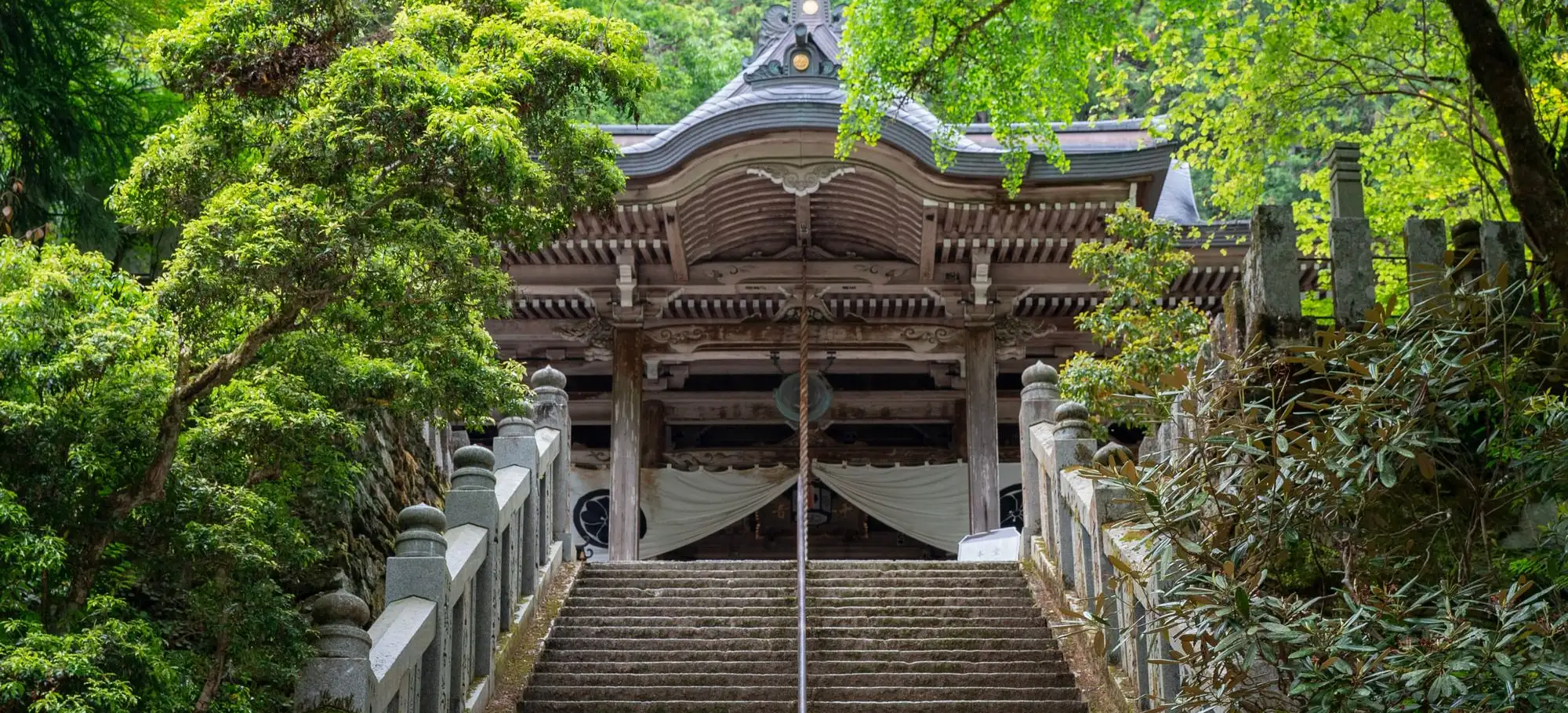
Day 8: Matsuyama
This morning, we travel into the Kumakōgen Highlands near the Ehime-Kōchi border to begin our hike from Temple 44, Daihō-ji (Great Treasure Temple), an important halfway point on the Shikoku 88 Temple Pilgrimage. We follow a scenic forest trail to Temple 45, Iwaya-ji (Rock Cavern Temple), dramatically set into the mountainside and surrounded by hundreds of Jizō statues. Kōbō Daishi meditated here after founding the temple in 805, and a ladder leads to a secluded cave where he is said to have spent long hours in prayer. Coins pressed into the cave walls show the devotion of pilgrims past and present.
After completing the hike, we return by bus to Matsuyama in the late afternoon. Enjoy the evening and dinner at leisure.
Elevation gain: 650 m
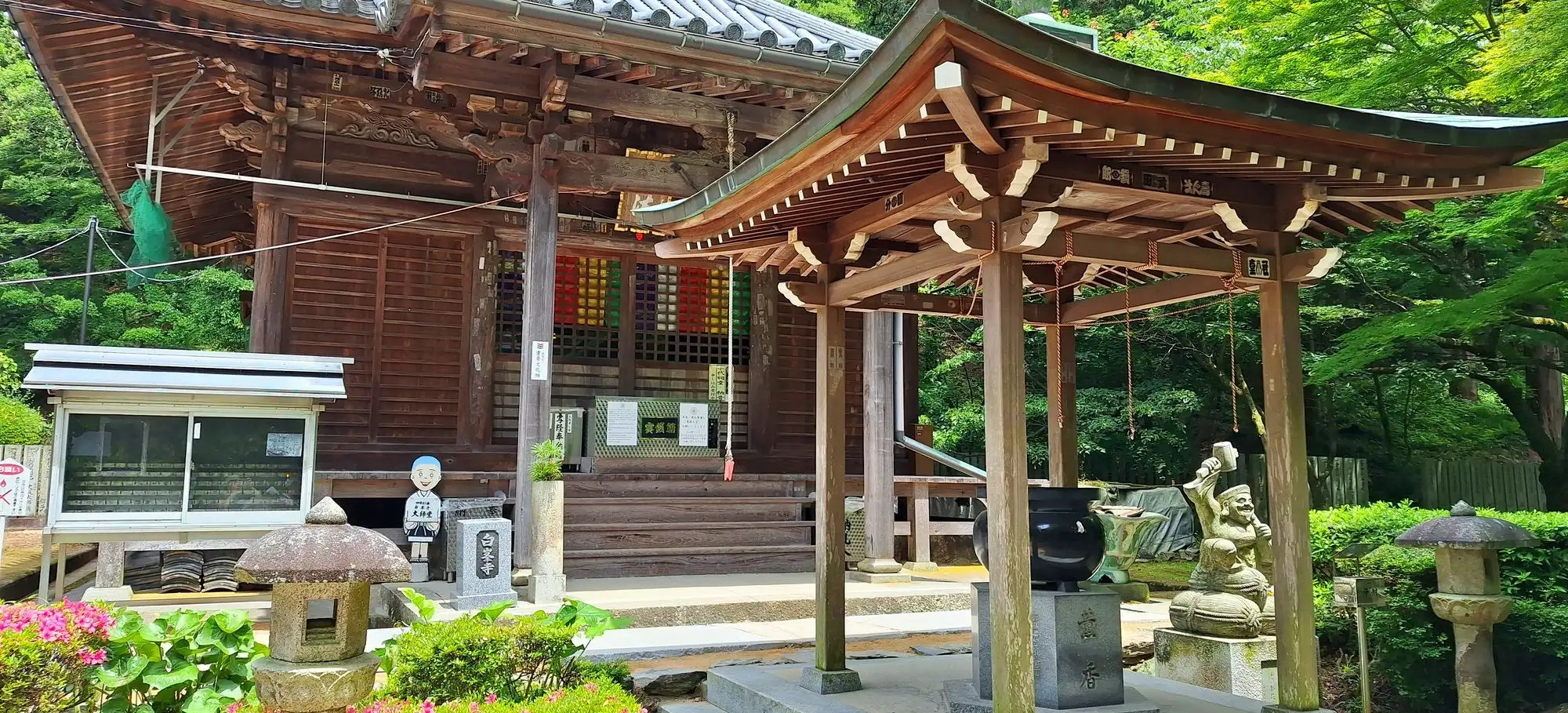
Day 9: Kotohira
Begin the day in Sanuki Province at a temple whose ancient halls and structures exude history and tradition. From here, ascend to Temple 81, Shiromine-ji (White Peak Temple) at the top of Mount Shiromine, then walk down to Temple 82, Negoro-ji (Fragrant Root Temple), a serene complex dotted with elegant stone lanterns that create a peaceful, timeless atmosphere.
In the afternoon, visit the picturesque town of Kotohira, home to Konpirasan, the famous Shinto shrine dedicated to sailors and maritime safety. Tonight, unwind at a cozy onsen ryokan, soaking in the restorative hot spring baths and enjoying a relaxing evening immersed in Japanese tradition.
Elevation gain: 655 m

Day 10: Kotohira
After breakfast, we begin the final leg of the Shikoku 88 Temple Pilgrimage, walking from Temple 87, Nagao-ji (Temple of the Long Tail) to Temple 88, Ōkubō-ji (Great Hollow Temple). Known as the Completion of the Vow, Ōkubō-ji is a sacred site where pilgrims traditionally offer prayers and make a wish, believed to be granted upon reaching this spiritual milestone.
The trail winds through peaceful countryside and charming rural landscapes, giving plenty of time to reflect and soak in the serene surroundings before arriving at the temple gates. After the walk, we return by private coach to our accommodation, enjoying a final relaxing soak in the onsen and a celebratory dinner to mark the completion of this unforgettable journey.
Elevation gain: 538 m

Day 11: Depature
After breakfast, your Shikoku journey comes to an end. Your guide will be available to answer any last questions and provide advice for your onward travel to the airport. Please note that airport transfers are not included in the tour.
We wish you safe travels and fond memories as you carry the spirit of Shikoku with you.
Ready to plan your adventure? Download a print-ready detailed itinerary.
Map
Dates and Prices
Book with Confidence: Enjoy peace of mind — your 20% deposit is fully refundable up to 60 days before departure. See terms & conditions.
Single Supplement
From US $800
Couldn't find a trip with convenient dates?
Open your date as a join-in tour or customize further as a private one.
Essential Info
Inclusions
LODGING
All hotels as mentioned in the tour details or similar (subject to availability).
trip leader
Expert Trip Leader(s) who look after your every need and add meaning to your vacation.
shuttle
A Van support follows the group of riders and carries all belongings.
Luggage Transfer
Transportation of luggage from one hotel to another.
meals
Meals as per itinerary. Guests are given the opportunity to dine on their own so that they discover a location independently.
Exclusions
Airport pickup
We recommend to book direclty from airport.
Airport drop
We recommend to book direclty from your last hotel.
Beverages
Beverages such as alcohol, tea, coffee, juice at a hotel or restaurant.
Gratuity
Gratuities for your guide team are not included in the trip price.
What to Expect
We want you to have a fantastic experience on your tour, so we aim to be upfront about what to expect along the way. Here are key details to keep in mind:
Accommodation:
Most of the hotels in Japan offer a mix of Japanese inns (Ryokans) and Western-style rooms. It is important to note that room assignments are subject to availability and beyond our control.
Japan is renowned for its rich cultural heritage, and two quintessential elements of this heritage are onsen and ryokans. Onsen refers to natural hot springs, which hold cultural, historical, and spiritual significance for the Japanese people. Ryokans, on the other hand, are traditional Japanese inns that offer a unique and immersive experience into the country's customs and way of life. Together, onsen and ryokans provide travelers with an opportunity to indulge in relaxation, rejuvenation, and a deep connection with Japan's past.
The combination of onsen and ryokans creates a unique travel experience that perfectly encapsulates the essence of Japan. Guests at ryokans often have access to private or communal onsen baths, allowing you to soak in the therapeutic waters while enjoying the surrounding natural beauty.
Japanese-style (Ryokans) rooms offer a unique local experience and are quite popular. They add a distinctive cultural touch to the tour. In Japan, taking public onsen hot spring in the hotel is so popular, so even nice beautiful hotels most time has rooms only with toilet.
Hence, for hotels lacking en suite bathrooms, guests are expected to utilize the communal bathing facilities.
Furthermore, depending on the hotel style, when double rooms are requested, we may only be able to secure twin rooms due to the limited availability of double beds in many Japanese hotels.
Shukubō (Tokushima)
These are lodgings in Buddhist temples originally meant for pilgrims, but now open to anyone. The rooms are similar to ryokan or minshuku, though with fewer facilities. The food is excellent vegetarian Buddhist ‘shojin-ryori’ cuisine. It is a wonderful experience to stay in a shukubō and there is also the opportunity to join the early morning religious service.
On day 2, we stay in a shukubo.
Dietary Preferences
While we do our utmost to accommodate all dietary requirements, please note that vegan and gluten-free options can be limited in some regions. We will certainly make every effort to cater to your preferences, but we recommend that guests carry some essential vegan or gluten-free staples as a backup to ensure their needs are fully met. Additionally, we encourage you to inform our guide at the start of the trip; they will be happy to assist you in sourcing suitable supplies from local grocery stores in larger towns whenever possible.
Arrival & Departure Details
Arrival
Your tour begins in Osaka. It’s the third biggest city in Japan after Tokyo and Yokohama and serves as the commercial and cultural hub of western Japan.
For most travellers, Osaka Kansai International Airport (KIX) is the most convenient entry point. From KIX, you can reach your hotel in central Osaka in about 45–60 minutes:
By train: Take the Nankai Airport Express or Limited Express Rapi:t to Namba Station, which is close to Hotel Monterey Grasmere Osaka (the usual first-night accommodation).
By airport limousine bus: Direct buses run from KIX to major Osaka hotels and stations, including Namba and Osaka/Umeda.
By taxi or private transfer: The ride takes roughly one hour and costs around ¥16,000–¥20,000, depending on traffic.
If you arrive at Osaka Itami Airport (ITM) or Kobe Airport (UKB), travel times are shorter (30–45 minutes). Most guests check in, rest, and then meet their guide and group in the evening for the welcome briefing and dinner.
Departure
Your tour ends in Kotohira. Here's how you can travel from Kotohira to Tokyo and Kyoto by train:
- Kotohira to Tokyo:
Step 1: Take the JR Dosan Line or Kotohira Line to Okayama:
- From Kotohira Station, take a local train on the JR Dosan Line (if you are using the JR Pass) or the Kotohira Line to Okayama Station.
- Duration: Around 60 to 80 minutes, depending on the specific train.
Step 2: Take the Shinkansen from Okayama to Tokyo:
- From Okayama Station, board the Sanyo Shinkansen to Tokyo. You can take the Nozomi (fastest), Hikari, or Kodama trains. Note that Nozomi is not covered by the JR Pass.
- Duration: Around 4–5 hours to Tokyo Station, depending on the train type.
- Kotohira to Kyoto:
Step 1: Take the JR Dosan Line or Kotohira Line to Okayama:
- Follow the same route as mentioned above to Okayama Station.
- Duration: Around 60 to 80 minutes.
Step 2: Take the Shinkansen from Okayama to Kyoto: -From Okayama Station, take the Sanyo Shinkansen to Kyoto Station. The journey is much shorter compared to Tokyo. -Duration: Around 1 hour.
Summary: Kotohira to Tokyo: About 5–6 hours total. Kotohira to Kyoto: About 2–3 hours total.
Both trips involve transferring at Okayama Station, where you can catch the Shinkansen for direct access to Tokyo or Kyoto.
Weather
Shikoku awakens with the soft touch of spring from March to May, when cherry blossoms drift over mountain paths and temple steps, welcoming travelers with gentle warmth. Summer from June to August brings humid days and sudden rains, yet golden mornings and quiet evenings reveal a wild, untamed beauty. September is calm and inviting, a gentle pause before the crisp embrace of autumn.
October and November drape the valleys and forests in fiery reds, offering perfect weather for hiking and wandering temples. Winter from December to February hushes the island, covering mountains in snow while coastal towns rest in peaceful quiet. Across the year, Shikoku shifts and breathes with its own rhythm, best in spring and autumn, good in September, mixed through summer, and off in winter, inviting travelers to lose themselves in its timeless heartbe
January
Offseason
February
Offseason
March
Best
April
Best
May
Best
June
Mixed
July
Mixed
August
Mixed
September
Good
October
Best
November
Best
December
Offseason
Best
Good
Mixed
Offseason
What to Pack
Packing wisely ensures comfort and safety on your hiking adventure. This list covers essential hiking gear, clothing, and travel items to help you handle varied terrain and weather conditions.
Recommended Hiking Clothes & Gear
- Lightweight hiking shoes or boots with good traction.
- Moisture-wicking base layers and breathable hiking shirts.
- Quick-dry hiking pants or shorts.
- Light fleece or down jacket for cooler temperatures.
- Waterproof and windproof shell jacket.
- Sun hat and sunglasses with UV protection.
- Hiking poles (optional but recommended on uneven terrain).
- Small daypack with hydration system or water bottles.
- Headlamp or small flashlight.
- Light gloves and beanie for early mornings or high altitudes.
Clothing
- Layered clothing for temperature changes throughout the day.
- Full-sleeved tops for sun and insect protection.
- Comfortable evening wear for lodges or inns.
- Compact rain jacket for unpredictable weather.
- Extra socks (preferably synthetic or wool).
Other Necessities
- Basic first-aid kit with personal medication.
- Sunscreen, lip balm, and insect repellent.
- Reusable water bottle or hydration bladder.
- Snacks like trail mix, nuts, or energy bars.
- Plug adaptor and power bank for charging devices.
Pro Tips
- Pack light — you’ll appreciate it on uphill climbs.
- Break in your shoes before the trip to avoid blisters.
- Keep rain gear easily accessible in your daypack.
Luggage
Please limit your luggage to one medium-sized suitcase and one daypack. Mark your luggage clearly with your name, address, and phone number.
Visa Information
Before venturing on your adventure, make sure you're equipped with essential travel advice, including security updates, local laws, and crucial passport and visa information. Start by visiting the official government website of your home country for accurate and reliable guidance:
- UK Residents: Stay informed by reviewing the Foreign, Commonwealth & Development Office (FCDO) Travel Advice.
- US Residents: Access vital travel tips and updates through the US Department of State Travel Advice.
- Australian Residents: Plan ahead with the latest updates on the Smart Traveller website.
- Canadian Residents: Find comprehensive travel and visa guidance on the Government of Canada's Travel Advice and Advisories.
- New Zealand Residents: Get practical travel advice on the New Zealand SafeTravel website
- Residents of Other Countries: Check with your government or local consulate for tailored travel advice and requirements.
Note: Passport and visa regulations can change at any time. Stay proactive by checking for the latest updates to ensure a smooth and stress-free journey.
Insurance
Medical insurance that covers medical costs in case of an accident during the trip is mandatory to participate in our tours.
We recommend to purchase adequate travel insurance in order to participate in our tours and protect yourself from unforeseen events. Our experience shows that guests who purchase travel insurance—including coverage for all activities on the itinerary, trip cancellation, interruption, delay, baggage damage, loss or theft, personal accident, death and repatriation costs, medical and emergency expenses (including Covid-19), and personal liability—travel with greater peace of mind.
Can I use my credit card insurance?
Yes, as long as it meets our requirements and provides adequate coverage. Ensure you have an emergency contact number and policy number available.
When should I buy travel insurance?
Purchase travel insurance as soon as you've paid in full or booked your flights.
Is proof of travel insurance required?
Yes. You must provide your insurer's name, policy number, and emergency contact via our reservation form. This is mandatory. If you cannot provide proof, you’ll need to purchase insurance before traveling with us.
Does Art of Bicycle Trips sell travel insurance?
We do not sell travel insurance directly, as we believe our customers should have the freedom to choose a policy that best suits their needs. However, we recommend Insured Nomads as a great starting point.
Frequently Asked Questions
A guided bike tour includes a professional local guide who rides with you throughout the trip. The guide handles navigation, manages daily logistics, ensures safety, and shares cultural insights. In addition to the guide, you also have a support vehicle that transfers luggage, provides water/snacks, and offers on-route assistance or a lift whenever needed. You simply follow the guide and enjoy a fully supported experience.
Your guides are local cycling experts, fluent in English, with deep knowledge of the region’s history, culture, and food.
On our guided tours, we ensure you begin your ride feeling comfortable and well-supported. Your guide and local team play an active role in getting your bike properly set up.
Before Your Tour
When you book, we ask for your height. This allows our local partners to select the correct frame size and prepare the bike in advance so it’s close to your ideal fit when you arrive.
At the Start of the Tour
You’ll receive a full in-person bike fitting with your guide or local representative. This typically includes:
- Adjusting saddle height
- Moving the saddle fore–aft (small adjustments to move the saddle forward or back for better balance and comfort)
- Fine-tuning handlebar height and reach (where adjustable)
- Confirming pedal preference — flat pedals are provided by default. If you bring your own clip-in pedals, our guide will help install and adjust them
- A short test ride to check comfort
Your guide will ensure everything feels right before the tour begins.
During the Tour
Throughout the trip, your guide will make additional adjustments whenever needed. This is especially helpful if you discover new comfort preferences after a few hours of riding.
What to Expect
Our guided tour bike fitting is hands-on, comfort-focused, and practical, ensuring you ride safely and enjoyably each day. It’s not a detailed workshop-level fit, but it covers all essential adjustments for multi-day touring.
Our support vehicle is always close by to make your ride worry-free. It carries your luggage, water, snacks, and spare parts, and is there if you need a quick lift or just want to rest for a while. You’ll see it at regular intervals along the route and during meal or refreshment stops. The vehicle is also used for scheduled transfers and to ensure safety and comfort along the route.
For guided tours, we do not provide GPX files separately, as navigation is handled by your guide. On certain occasions, if you prefer more independence, we may offer app-based navigation access with the daily routes loaded. However, please understand that this may not always be possible and depends on the specific tour setup.
Airport transfers are not included unless specifically mentioned in your trip inclusions.
For airport pickup, we recommend booking directly from the airport upon arrival — most airports have reliable taxi, shuttle, or app-based options.
For airport drop, please book a transfer through your last hotel — they can easily arrange it for you.
We focus on delivering exceptional experiences during your tour. For logistical simplicity and flexibility, we do not handle pre- or post-tour hotel bookings. However, we’re happy to share a list of recommended hotels near the starting and ending points of your trip so you can plan your stay independently.
The fitness level required for each trip is indicated by the "level" of the tour, which in turn is mentioned on each tour page right next to the price and the trip duration.
Easy: The terrain is mostly flat with a few gentle climbs.
Moderate: The terrain is either mostly flat or consists of rolling hills with a few challenging climbs. There could also be a few days with longer riding distances of up to 75 kms (45 miles)
Difficult: The terrain is mostly hilly with strong elevation gains and/or has long days on the bike. Such trips are recommended for intermediate to advanced cyclists.
Please note that we usually bike around 4-5 hours per day irrespective of the level of the trip.
Our tours in Japan feature a mix of traditional Japanese inns (ryokans) and Western-style hotels. Room assignments are subject to availability and may vary from place to place.
Japan’s cultural heritage is beautifully reflected in its onsen (natural hot springs) and ryokans. Staying in a ryokan offers an immersive experience, with tatami-mat rooms, traditional décor, and access to communal or private hot spring baths. Onsens are an important part of Japanese culture, valued for relaxation, healing, and their historical significance.
Please note that:
- Ryokan rooms often do not have en suite showers or baths. Even in upscale properties, many rooms include only a toilet, with guests expected to use the communal onsen bathing facilities.
- Double beds are limited in many Japanese hotels. When double rooms are requested, we may only be able to secure twin rooms depending on availability.
Ryokans and onsens add a unique and memorable cultural dimension to your trip, offering an authentic and restorative Japanese experience.
Yes, please communicate your dietary preferences to your trip leader and they'll ensure that the food you eat is as per your requirements.
Yes — we do our best to support all dietary requirements. However, please note that vegan and gluten-free options can be limited in certain regions of Japan, especially in smaller towns. We will make every effort to cater to your needs, but we strongly recommend bringing a few essential vegan or gluten-free staples as a backup.
At the start of your trip, please inform your guide of your dietary preferences. They will be happy to help you identify suitable meals and assist in sourcing appropriate supplies from local grocery stores in larger towns whenever possible.
Most of this trip is on double-lane paved tarmac roads with very less traffic.
We've designed this itinerary such that most of the cycling happens on quieter countryside roads far from busy traffic. The shuttle transfers on this tour have been strategically planned to bypass busy vehicular traffic.
While your tour price covers most common expenses, a few meals not included in the itinerary may require additional spending. As a general guideline, you can budget approximately US $25 per person per day for these extra expenditures.
Tips are not included in your tour price.
As a general rule, you may tip US$ 15-25 per person per day.
This figure is for the entire crew including the trip leader, the driver, and other support staff.
However, you are not obligated to tip, and you can always tip less or more than the above amount depending on the level of service you received on tour.
It is usually the norm to tip the tour guide, who then distributes the amount among the entire crew. However, you can also tip each individual member of the crew if you so desire.
In case you want to tip the staff at a hotel such as porters, you may pay them US $2-3 per day.
You can exchange currency at the currency exchange kiosks in Japanese airports, or you can use your credit card at ATMs at convenience stores such as 7/11 in major Japanese cities to withdraw JPY. Many Japanese commercial establishments still prefer cash, so its good to have some local currency with you when cycling in Japan.
Yes, you may wear riding shorts while riding your bike. When not cycling, it would be advisable to wear comfortable full-length pants. We recommend keeping a pair of comfortable pants handy in you support van.
When visiting temples and monuments, visitors should wear full-length, loose-fitting pants. Holy places of certain religions may also require covering your head. Your guide will inform of the dress etiquette required for visiting specific religious places.
The meeting time on Day 1 is mentioned in your travel planner shared with you. You can arrive either on the morning of Day 1 depending on the meeting time, or book a pre-tour night to arrive a day earlier.
We don't have anything planned for the last day, so you are free to depart at your discretion.
Reviews from our friends
You may also like

Self-Guided Croatia's Adriatic Isles Hiking and Walking Tour
8 daysfrom$2,195/person

Self-Guided Peneda-Gerês National Park Hiking Tour
8 daysfrom$995/person
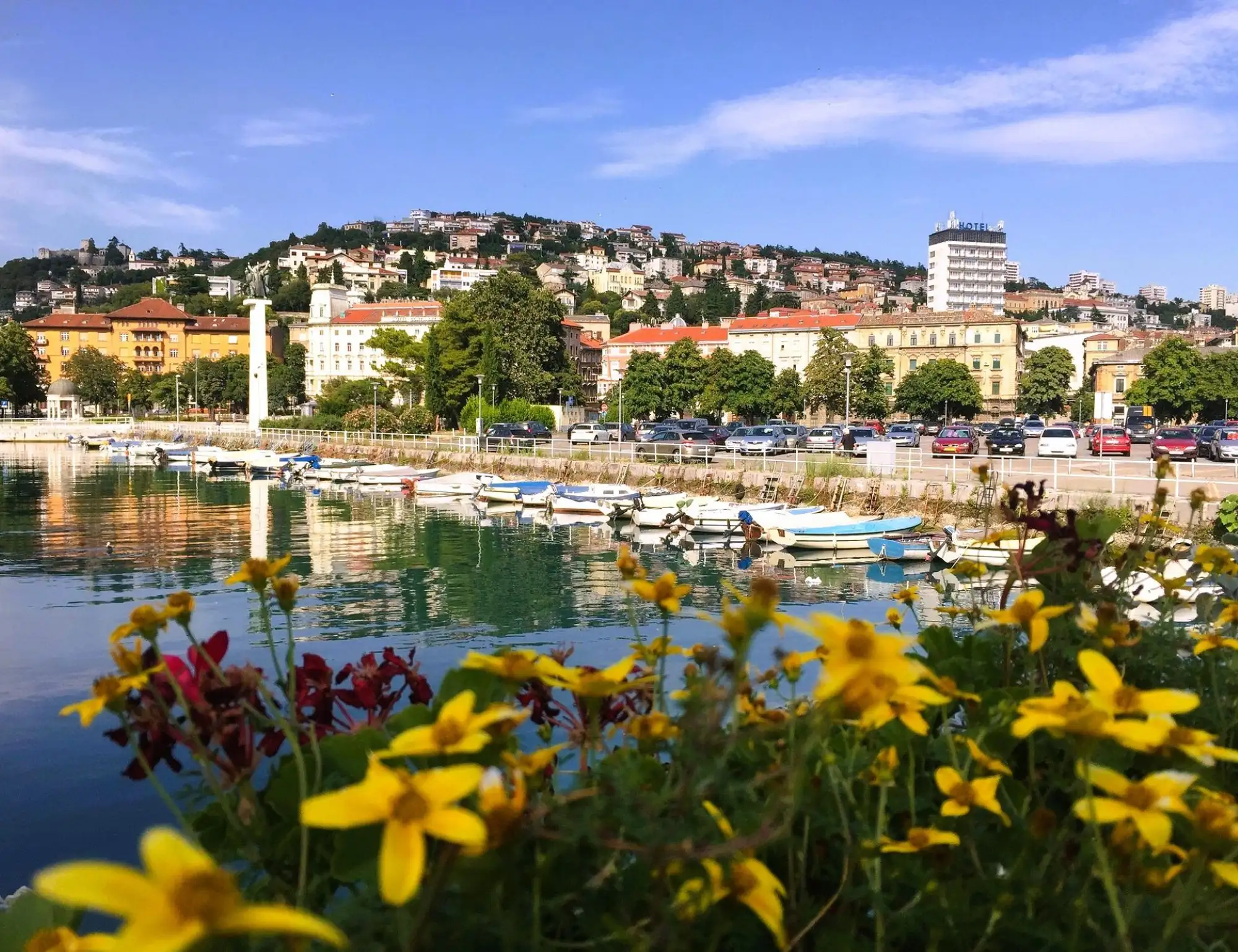
Self-Guided Southern Dalmatia Discovery Croatia Hiking and Walking Tour
8 daysfrom$1,995/person
